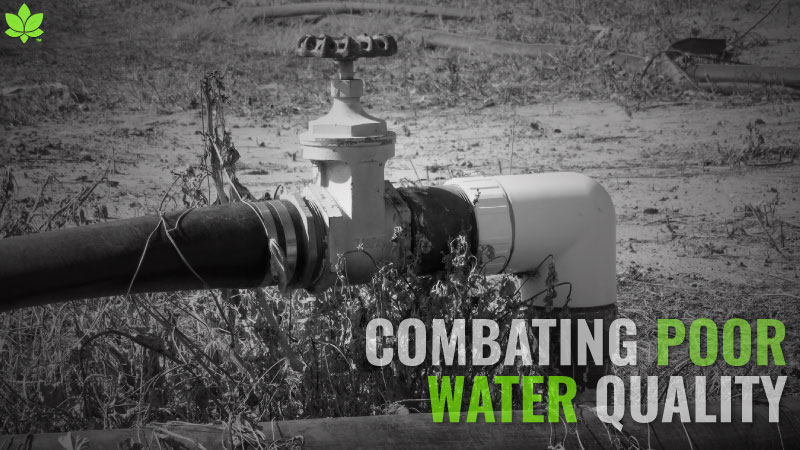Plastic Mulches — A Remarkable Thing When It Comes to Growing Raspberries
Plastic mulches are a wonder of the agricultural world. When deployed correctly, not only can they provide weed suppression in the absence of herbicides and reduce hand-weeding costs, but they can also modify the soil environment to promote crop growth and yields.
But not all plastic mulches are equal. In fact, crop response varies depending on the product and time of deployment. In addition, new mulch technologies, such as soil-biodegradable plastic mulches (BDMs), can provide the same benefits as conventional, non-degradable polyethylene mulches (PE) without the generation of waste that is costly to dispose of.
However, research on new mulch technologies is limited in perennial fruit systems such as raspberry. Our team at Washington State University seeks to fill this knowledge gap and answer the question: Plastic mulches — are they worth it?
Increasing Yields
A three-year trial comparing PE mulch and multiple BDM treatments to the unmulched grower standard provides a perfect example of what can go right with plastic mulch application. In this trial, mulch treatments were applied in May 2017 and removed by mid-March 2018. Raspberries planted as tissue culture transplants and grown with mulch had increased vegetative growth, and first-year yields were 34% greater relative to the unmulched grower standard.
While the yield gain did not persist in the second harvest year, the benefits provided by mulching covered their purchase costs, and mulch application proved to be an economical practice. Weed suppression and elevated soil temperatures improved crop growth. While no crop response differences were seen between PE mulch and BDMs, many Washington raspberry growers have incorporated PE mulch into their systems to achieve the benefits observed in this experiment.
Slightly Different Story
Washington growers plant tissue culture raspberry in the spring and late summer, making it important to understand what happens when plastic mulch is used during both planting times. A two-year trial compared PE mulch and multiple BDMs to the unmulched grower standard, with mulch application occurring in August 2017. All mulch treatments provided excellent early weed suppression.
However, the BDMs did not withstand the windy winter conditions and were removed eight months after application, while the PE mulch remained for 20 months. Comparisons between PE mulch and the unmulched grower standard revealed increased vegetative growth with PE mulch that did not translate into yield gains.
Despite the lack of a yield response, growers planting in late summer have started to adopt PE mulch for weed suppression benefits and to enhance vegetative growth.

Crop response of raspberry grown with mulch (left) and without mulch (right) show the benefits of plastic weed mulch.
Photos by Lisa DeVetter
Worth the ADDED Expense?
Weedmat is an example of a multi-year mulch made from woven PE (and sometimes polypropylene). This material (also known as a landscape fabric and geotextile) is semi-permeable and can provide mulch functionality for the life of a raspberry planting because it is thicker and more durable than PE mulch.
In contrast, PE mulch and BDMs are designed for annual application. In a three-year trial planted in spring 2019 using tissue culture raspberry, weedmat was compared to PE mulch, BDM, and an unmulched control. All mulches suppressed weeds and improved crop growth relative to the unmulched treatment with growth and yields equivalent between PE mulch and weedmat.
Although crop responses were equivalent between PE mulch and weedmat, economic considerations do not support the use of weedmat in raspberry, given the material is at least five times more expensive to purchase and install relative to PE mulch, and disposal fees will be greater for weedmat given its greater weight.
Risk and Adoption
What are growers’ perspectives on new mulch technologies? Understanding grower perspectives is always important when thinking about application of new technologies, including ones that may enhance on-farm and environmental stewardship like BDMs. Grower-identified risks associated with PE mulch and BDM include negative impacts on soilborne diseases and parasitic nematodes, long-term effects on root and cane growth, and economics.
For BDMs, growers were more cautious about their costs, durability, and completeness of in-soil biodegradation. Findings such as these help direct future research to answer grower-led questions and build confidence when it comes to adopting new technologies that can enhance growers’ revenues while balancing the environmental implications of farming.
Author Notes: Special thanks to column co-author Brenda Madrid, a former Master of Science graduate student at Washington State University.
Funding for this project was provided by the Washington State Department of Agriculture Specialty Crop Block Grant program (K2525) and Washington Red Raspberry Commission. This work was also supported by the USDA NIFA Hatch projects 1014919, 1017286, and 1014527.










